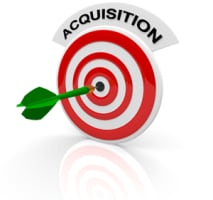Are customer acquisition campaigns damaging your organisation?
Are you hurting your own business by offering enticing deals to new customers?
This is the question that sparked a robust conversation on new and old customers during a leader's panel discussion at Downstream 2017, the annual strategic forum for New Zealand's energy sector.
While the conversation centred around electric retailers, the takeaways hold true for any organisations that want to expand their customer base. Why is this a poor strategy for growth, and how is analytics helping companies navigate a better path for client acquisition?
The problem of incentives
Consumers are certainly familiar with ads targeting new customers or trying to entice them away from competitors. These so-called 'switchies' are presented with offers for great deals if they bring their business to the new provider. The mobile phone industry is rife with these sorts of programs, offering new customers bargains like extra data or free minutes for the first six months.
But who really benefits from these campaigns? When looked at from a wider perspective, they don't appear as helpful.
"When you're incentivising switchies, somebody pays at the end of the day," said Philippa Dawe, Head of Design at Powershop.
"It's a really difficult one to balance as a retailer, and probably for any industry as well; as soon as you offer incentives to new customers, the old customers get up in arms. The value of it is questionable, really. I don't think the customer will ultimately win"
John Philippa Dawe
Head of Design, Powershop
It's understandable that loyal customers don't appreciate incentive campaigns targeting switchies. They don't want to see newcomers treated to better offers that are unavailable to them. If they feel their rates are impacted by the need to provide these deals, it could lead to even greater animosity.

The importance of fairness
Existing customers' negative reactions to incentive campaigns come down to a sense of unfairness, and that feeling is justified. Retailers need to ensure that they attract new customers in a way that doesn't slight their existing ones.
In addition to putting off loyal customers, incentives aren't necessary a stable strategy to begin with. If someone signs on to take advantage of a good deal, what's to stop them from moving on when another provider comes to them with a better offer - or if their original retailer targets them as part of a win-back campaign?
"We have a view that you put your best foot forward, and that applies to all customers. Clearly the customer is not winning if their incentive is just to switch and hold their retailer to ransom," said P2 Power Co-director Stuart Innes.
A better strategy
Of course, it's easy to just say that your service should be an incentive in and of itself. Organisations will still need a strategy for marketing themselves to potential new customers - just one that doesn't come with the risk of alienating sticky customers.
There are two key paths forward for the sector in this regard, and the first is shifting focus towards benefiting all customers.
"We need to get away from this 'it's $300 off your first bill; come and join us today,' and more into 'what is the long-term value proposition for the customer,'" said Julia Jack, Chief Marketing Officer for Mercury.
"The thing that keeps your customers is also the thing that makes customers want to join you in the first place."
Let analytics drive marketing
Without incentive campaigns, organisations can turn to customer analytics instead - focusing on how and when they approach potential clients, rather than an offer that upsets current ones. This will lead to more campaigns fuelled by data, noted Stuart Innes.
"The days of door knocking are well over; the days of blanket TV ads are drawing to an end," he said.
"Machine learning and the predictive analytics that come from the firehose of data organisations get - whether it's on the phone or your web browser or energy consumption - is really going to be what allows companies to acquire customers for these very bespoke, data-driven offers."
He shared a story of his experience with data-driven marketing to show how effective a targeted campaign can be.
"I ride a scooter to work every morning, and I'm also an Uber user. This morning, I received a push notification, which said, "Make money out of your scooter,"" he said.
"I must have left my location on at some stage, and Uber saw me riding, swerving gracefully - or recklessly as the case may have been - and deduced that I have a scooter. So they've given me this very relevant and timely notification, it's come straight to my pocket and I've looked at it right away."
The benefits of analytical thinking
Analytics is certainly useful in tailoring campaigns to specific customers, but it provides businesses with something even more advantageous - an analytical frame of mind. This involves making data and the insights derived from it a central factor in decisions that affect the entire organisation. After all, data is an essential company asset - one that can be leveraged for the benefit of customers and the overall business.
Whether it's customer analytics for boosting retention and engagement, performance analytics for providing exceptional service through system stability and reliability, or procurement analytics for better value across supply chains. These all work to help an organisation provide better services for stakeholders.
A powerful tool, analytics enables this level of effective customer acquisition without spurning loyal customers. Contact SAS today to learn more.
This granular level of control can be used in conjunction with sophisticated rate models to ensure connected customers are getting the most value out of their electricity, whether generated with solar PV or supplied through the grid.
How Panasonic's battery and control system work is indicative of the larger evolutionary track of analytics within the energy sector - a progression from monitoring to greater control and, eventually, automation. Through a range of tools such as grid optimisation and predictive modelling, analytics underpins the use of smart devices to bolster safety and reliability across the network.
SAS Analytics can help provide the insights needed to drive this level of service through the IoT. Contact us today to learn more.

Read More
- How can Customer Intelligence create customer experiences.
- See how Analytics reveals new utility customer value.
